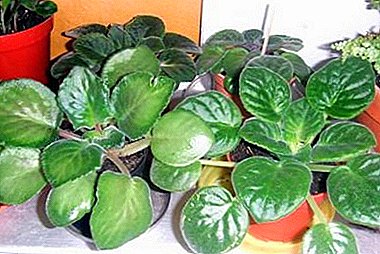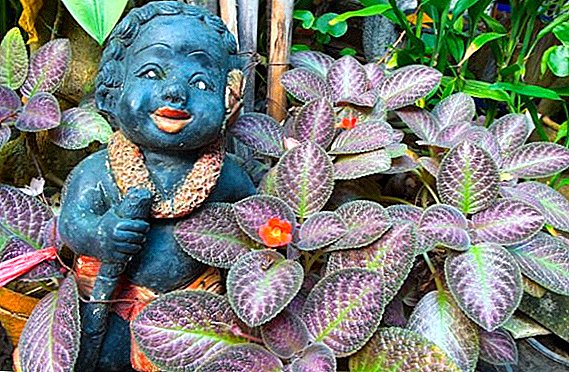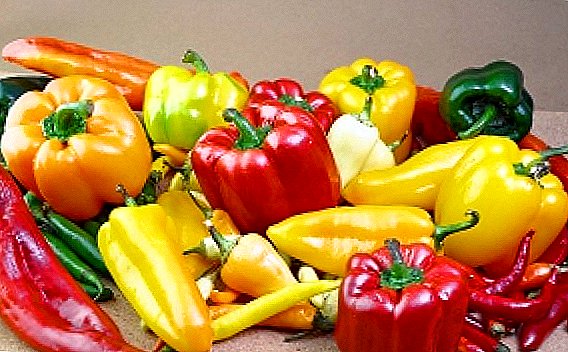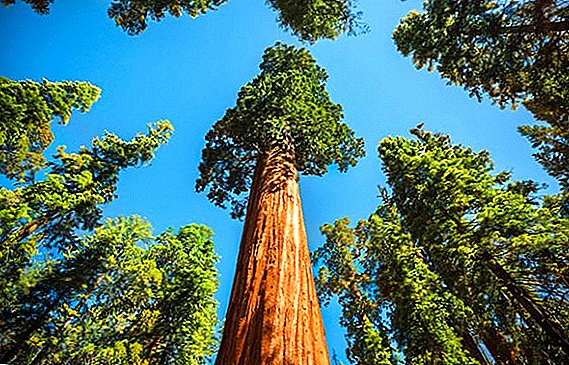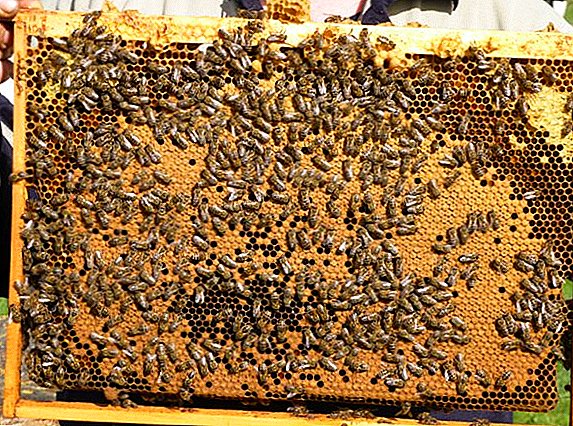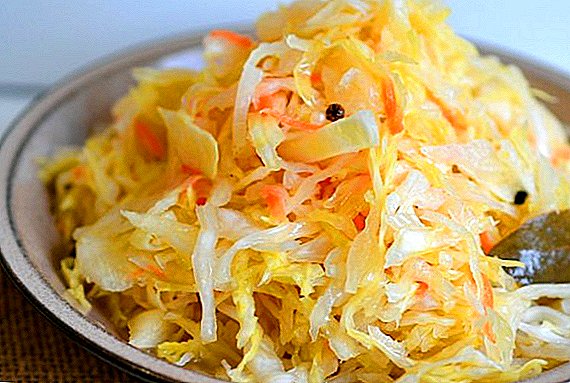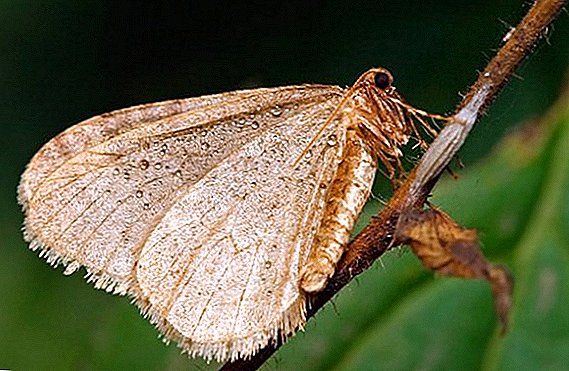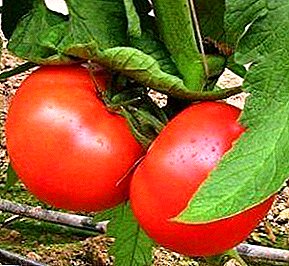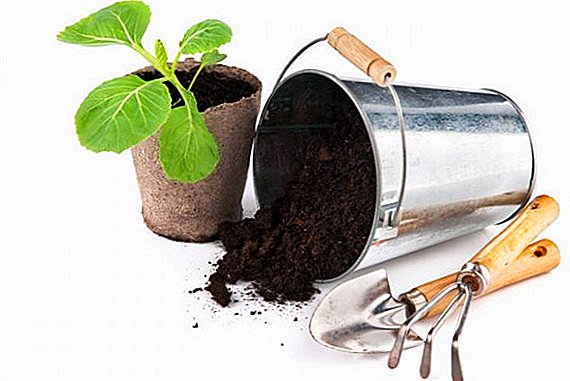 Properly prepared soil is an important prerequisite for the successful growth and development of your green spaces and garden crops. However, it must be borne in mind that different plants require a different type of soil, which is associated with differences in the natural range of their growth and structural features. This article will help you figure out how to make the land for different types of seedlings with your own hands.
Properly prepared soil is an important prerequisite for the successful growth and development of your green spaces and garden crops. However, it must be borne in mind that different plants require a different type of soil, which is associated with differences in the natural range of their growth and structural features. This article will help you figure out how to make the land for different types of seedlings with your own hands.
General requirements
Before undertaking the manufacture of soil for seedlings with your own hands, you need to take into account that its composition may differ due to the different needs of the plants planned for planting, and understand the generally accepted quality indicators of any soil suitable for plants.  Their short list is given below.
Their short list is given below.
Did you know? Soil ranks second on Earth after the ocean in carbon content, which is primarily due to the diverse and rich content of various matter of organic nature.
- The soil must have a high fertility and be fairly balanced. This means that, in addition to various organic compounds, it should also contain mineral components in the form of substances that the plant can conveniently process.
- Soil should have the greatest possible ease, friability and porosity to ensure the free passage of air to the roots of plants.
- A necessary property of the soil is the ability to absorb moisture well and not give it away too quickly, which is designed to ensure uniform moistening of the entire volume of the soil and facilitate the absorption of moisture by the roots of plants.
- It is necessary to carefully monitor the level of acidity, which is best kept at a level close to neutral (about 7.0).
- A prerequisite for the normal development and growth of seedlings is the presence in the soil of beneficial microorganisms, waste products of which are necessary for plants.

What can and can not?
Before undertaking the preparation of soil for seedlings, it is useful to clearly understand for yourself the list of components that in no case can not be included in its composition.
It is also necessary to know the components that have a positive effect on the properties of your land and help to bring it to the desired state before planting.
Did you know? The soil is the largest water filter on the planet, through which millions of tons of water pass annually.
Featured Items
For the manufacture of soil using various ingredients of organic and inorganic nature, which are mixed in different proportions in order to obtain properties that are optimal for your seedlings.
Learn about growing seedlings in toilet paper, in cassettes, peat tablets, in diapers.Among the organic components recommended for use, it is worth highlighting:
- humus;
- eggshells (raw, dried and crushed);
- ashes of trees (birch has the best properties);
- different types of moss;
- peat;
- leafy ground (rotted foliage of almost any species of trees, with the exception of willow and oak, because they contain too many tannins);
- sod soil.

Inorganic components used to obtain high-quality soils:
- carefully washed sand from the bottom of the river. It is desirable that it be a light shade, because they believe that the darker the shade is, the more the composition contains various chemical substances, including manganese and iron, the excessive content of which has a negative effect on plants;
- hydrated lime (used to reduce the level of acidity);
- the polyfoam torn into small pieces;
- hydrogel is a special substance, which due to the developed ability to absorb moisture, allows to reduce the multiplicity and volume of irrigation;
- Perlite is a substance that does not harm the environment and is able to absorb a huge amount of water (about 400% of its own weight) and gradually give it to the plant. It can be used to improve the looseness and air permeability of the soil;
- Vermiculite - has properties similar to perlite, but, in addition, contains a number of trace elements, which positively affects the growth of seedlings. The last two substances in their original form are often used in the application of hydroponic methods of growing plants;
- expanded clay.

Not recommended components
The list of components that are completely out of place in the ground is very wide. However, in this article we will limit ourselves only to those components that are often mistakenly considered relevant, but in fact they are not.
- You should not add clay, because it will increase the viscosity of the soil mixture, which will worsen its quality and complicate the growth of seedlings.
- Do not add actively decomposing components to the soil. Organic matter is undoubtedly necessary for the proper development of plants, however, active decay processes will contribute to the rapid elimination of nitrogenous components from the soil and increase in soil temperature - both the first and the second is highly undesirable for young seedlings.
- You can not take the basis for soil mixture near roads, bus stations, airfields and urban flower beds, because the ground taken from there is a large amount of toxic substances that will adversely affect your plants.
- Dead parts of cultivated plants should not be added to the soil, since various pathogens, eggs of pests and fungal spores can persist on them.

Buy or cook?
Anyone who has ever planted plants wondered what kind of soil it is better to choose for seedlings - ready or cooked with your own hands? Alas, there is no definite answer to this question. Each gardener must make a decision based on their own experience.
Sometimes it happens that the acquired soil does not always meet the needs of seedlings. In this case, you can improve it yourself. For example, you can increase the fertility of the purchased soil by adding sawdust to improve the growth of seedlings of tomatoes and peppers.
It will be useful for you to learn about the cultivation of seedlings of pepper, tomatoes, parsnips, beets, eggplants, savoy cabbage.The set of measures to improve the properties of the purchased soil must include the following points:
- it is necessary to check the pH of the medium, and in the case of obtaining results that differ from the permissible boundary norms, acidify or alkalize the soil;
- decontaminate the soil using any of the methods described below;
- in case of a large amount of peat in the purchased mixture, it is necessary to dilute it by adding 30–40% of ordinary garden soil;
- In order to increase moisture capacity, add a hydrogel, vermiculite or perlite to the soil.

Soil preparation
Absolutely any soil, no matter for which seedlings it is intended - whether it be tomatoes, peppers, cucumbers or cabbage - requires the implementation of a certain set of activities that will contribute to good growth and proper development of seedlings.
You should start by sifting soil and sand through a sieve, which will get rid of large stones, insect larvae and worms, after which you can proceed to disinfection.
Disinfection
Experts recommend to carry out this procedure in order to get rid of various pathogenic microorganisms, larvae of small parasites and eggs of pests. Often use one of the methods listed below.
- Steaming. Recommend to hold a month before the intended period of use. For this, a water bath is constructed and the soil is steamed for several hours. The lid of the water bath should be tightly closed.
- Freezing The soil harvested in autumn is left outside, closing it, thereby limiting the ingestion of precipitation. A month before use, the soil is brought into the room, warmed up, other components are added and again put on the street.
- Calcination. This method involves the use of an oven or stove. The soil is placed on a tray, distributing it in a layer thickness of 5-6 cm. Then leave in the oven, heated to 40-60 degrees, for one hour.
- Etching Prepare a solution of potassium permanganate, at the rate of 0.3 g per 1 l of water. Actively mix the soil with the solution and leave to dry.

Acidity adjustment
As mentioned above, the acidity of the soil should be at a neutral level, that is, in the range of 6.5-7.0. If, after checking the acidity, you get a result that fits into this framework, the need for any further manipulations disappears.
Important! After decontamination, it is important not to allow disease-causing agents to enter the soil, therefore it is recommended to store it in a sealed package and to protect the soil from direct contact with untreated land.If you get a result that tends to the acidic side (<6.5), the soil requires deoxidation, which is done by adding dolomite flour, cement, slaked lime or wood ash to the soil.
Important! You should not be overly zealous when adding wood ash to the soil, since its excess can lead to an increase in the alkalinity of the soil.If the result tends to be alkaline (> 7), then it is necessary to add any alum, citric acid, sawdust, spruce leaves or fermented birch sap to the existing soil.

Preparation of soil mixture for various crops
Different plants, despite the presence of practically identical components in the soils produced for them, often require some special ingredients for their proper development.
For example, the soil for seedlings of tomatoes and peppers should have slightly alkaline properties, so it is recommended to add a small amount of wood ash to it. Below you can find recipes for making pochvosmesy suitable for a particular culture.
For tomatoes
- Hygiene - 1 part.
- Sod or leaf earth - 1 part.
- Drainage material - 1 part.
- Wood ash - 300-400 g for every 10 kg.

For cabbage
- Sod land - 3 parts.
- Leafy ground - 3 parts.
- Hygiene - 3 parts.
- Drainage material - 1 part.

For pepper
- Hygiene - 1 part.
- Sod land - 2 parts.
- Drainage material - 1 part.
- Ash wood - 300-400 g per bucket.

For eggplant
- Fertile soil - 1 part.
- Hygiene - 1 part.
- Drainage material - 1 part.

For cucumbers
- Hygiene - 1 part.
- Sod land - 1 part.
- Wood ash - 150-200 g per bucket mix.

For salad
- Leafy ground - 3 parts.
- Peat - 2 parts.
- Drainage material - 2 parts.

For celery
- Hygiene - 1 part.
- Sod land - 2 parts.
- Drainage material - 1 part.
- Wood ash - 300-400 g per bucket of soil mixture.

We hope that this article has helped you in resolving issues regarding self-preparation of the soil for your plants. Remember the need to disinfect the soil and take into account the need of a plant in a particular level of acidity - and the result will not take long!


